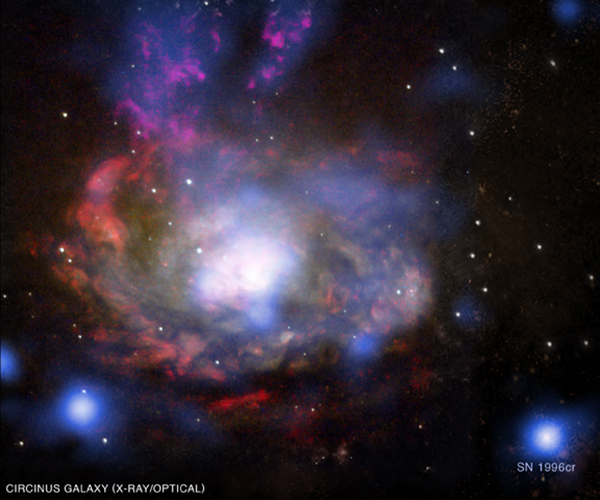SN 1996cr: A supernova in Circinus galaxy about 12 million light years
away.
Caption: This composite image shows the central regions of the nearby Circinus galaxy, located about 12 million light years away. Data from NASA's Chandra X-ray Observatory is shown in blue and data from the Hubble Space telescope is shown in yellow ("I-band"), red (hydrogen emission), cyan ("V-band") and light blue (oxygen emission). The blue source near the lower right hand corner of the image is the supernova SN 1996cr, that has finally been identified over a decade after it exploded. The supernova was first singled out in 2001 as a bright, variable object in a Chandra image, but it was not confirmed as a supernova until years later, using data from a total of 18 different telescopes, nearly all of which was from archives.
Scale: Image is
43 arcsec across.
Chandra X-ray Observatory ACIS Image
|


